Tessa’s Recipe Rundown
Taste: These scones are ultra buttery with a hint of sweet tanginess. The customization and flavor options are endless!
Texture: Extremely tender, flaky, light, and golden brown on top. Every bite is heaven!
Ease: Super easy. Less than 40 minutes from start to finish, plus you can make them ahead of time.
Why You’ll Love This Recipe: The perfect recipe to have in your back pocket for any special breakfast or brunch.
This post may contain affiliate links. Read our disclosure policy.
I never used to understand the obsession and appeal of scones – that is, until I took a bite of a truly great scone!
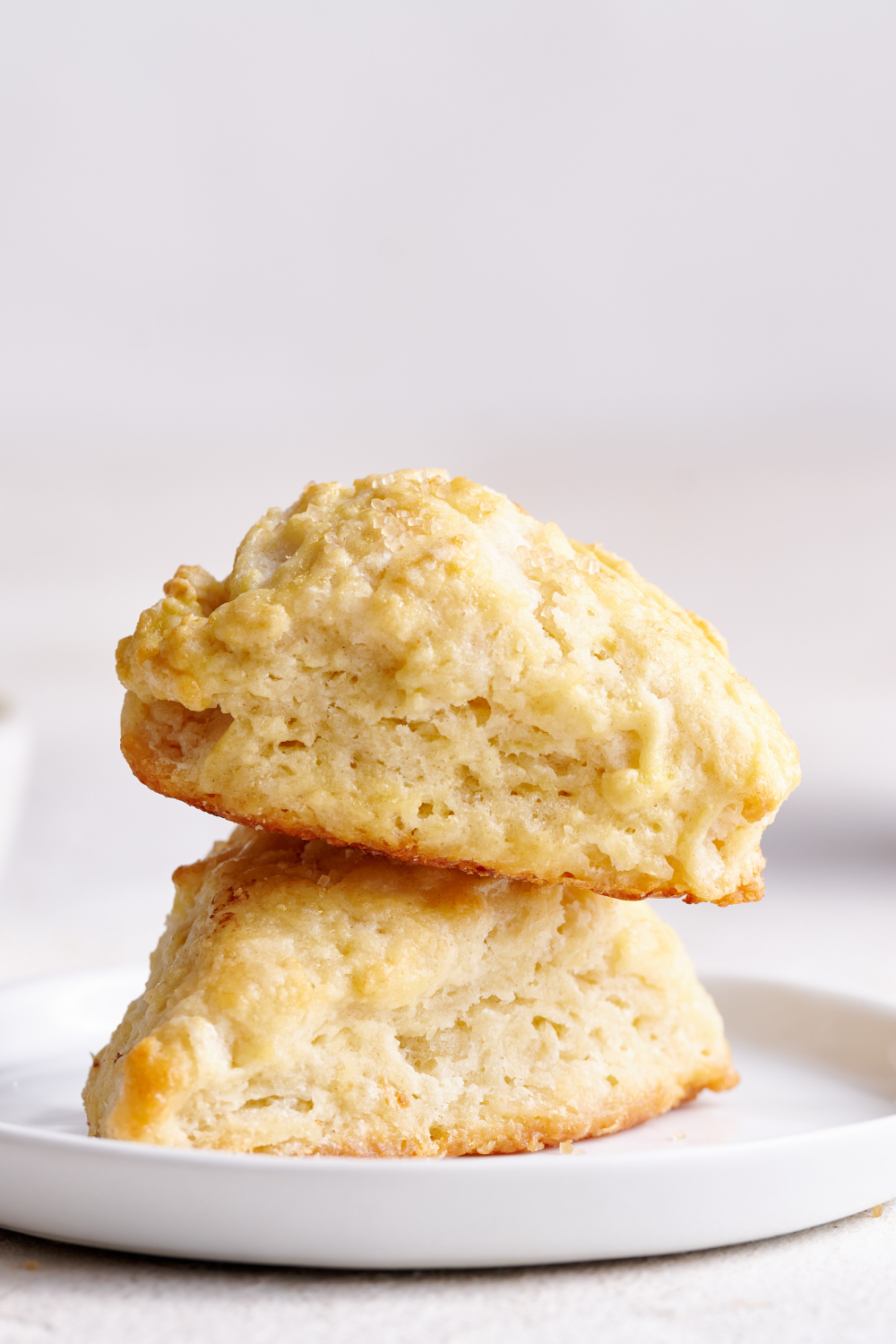
Many scones are bland and dense – but once I perfected this recipe, I realized how delightful scones can be. They’re sturdier and heartier than biscuits because they contain eggs and more sugar.
What I love most about them (besides all. the. BUTTER.) is that they belong on any breakfast or brunch table.

Free Muffin Cheatsheet!
Dry, dense muffins? Not in your kitchen! Bake the most tender and moist muffins with our Ultimate Muffin Guide.
British publication The Mirror even noted how unforgettable this recipe is in their recent article all about scones!
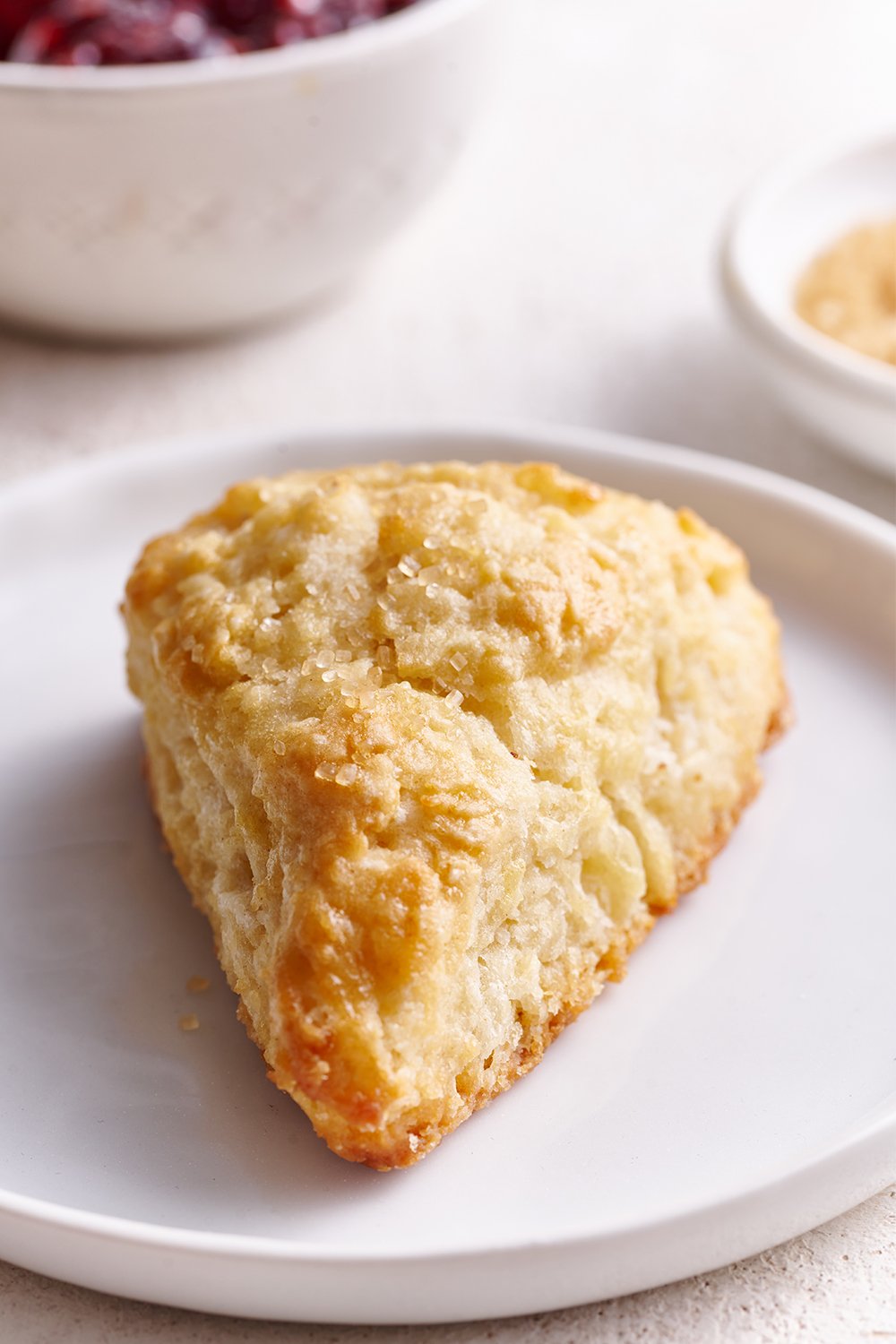
You can add nuts, citrus zest, chocolate chips, or simply serve alongside flavored butter or your favorite jam and clotted cream (although this is more of an American scone recipe than British).
Be sure to read through all my tips below to make buttery, tall, flaky, perfect scones every time!
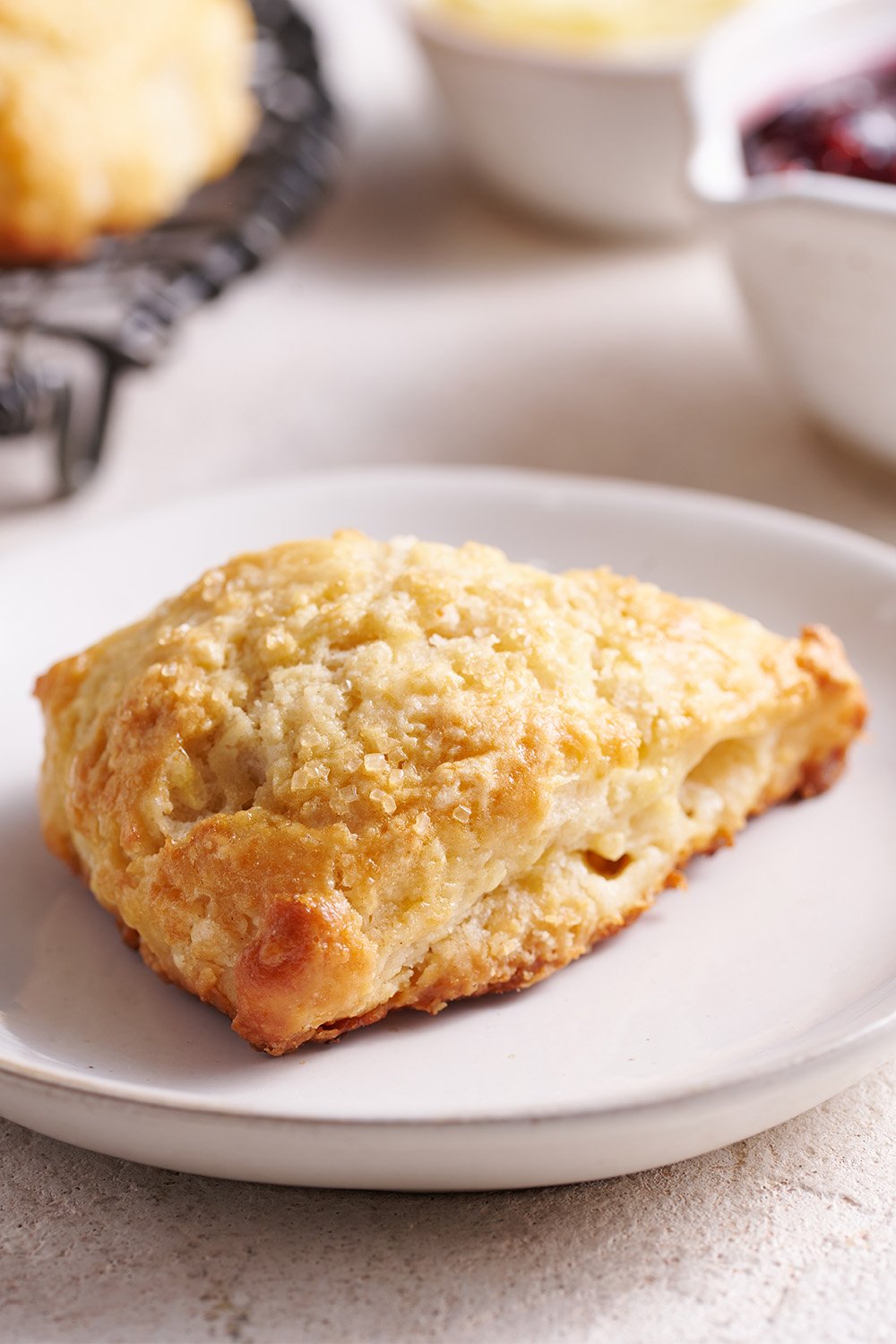

Sprinkle of Science
How to Make The Best Scones
Flaky Scones Need Cold Butter
- Butter must be COLD from the very start until the dough enters the oven.
- The cold butter melts upon entering the oven and the water content in butter evaporates in steam.
- As the steam escapes, it bursts up and creates that beautiful tall, flaky, fluffy texture.
- To maintain the cold butter, I like to cube then freeze my butter before assembling the dough.
- I also always prefer to use unsalted butter for baking. You can find out why here: Salted vs. Unsalted Butter.
Why is Buttermilk Used in Scones?
This is absolutely the preferred liquid here. It will result in tender, taller scones because its acidity reacts with the baking powder and tenderizes the dough. It also adds a lovely tang to create more depth of flavor.
What if I Don’t Have Buttermilk? Can I Substitute and Still Make Scones?
I don’t recommend substituting buttermilk with a DIY buttermilk. If you aren’t able to use buttermilk, you can also use keffir or heavy cream. Learn more about the science of buttermilk here.
Tips for Making Scone Dough:
- Whatever you do, do not overmix the flour mixture or dough or allow it to get too warm, to avoid flatter, tougher, and less flaky scones.
- My absolute favorite tool for making this dough quickly and easily by hand (so I don’t have to lug out my food processor) is this OXO bladed pastry blender.
- Use a marble pastry board to help keep the dough cool. If at any point you notice the butter become greasy and melty, pop the dough into the freezer for 10 to 15 minutes before proceeding.
- Once shaped, you can also place the baking sheet of unbaked scones in the fridge or freezer while the oven preheats, to ensure the butter remains nice and cold.
How to Make Tall, Flaky Scones Bonus Tip
We’re stealing a trick from croissant baking that I also use in my Best Ever Pie Crust recipe! A little bit of “lamination” gets the scones to shoot up sky-high with tons of flaky layers. Don’t worry, it sounds more complicated than it actually is.
If this seems like too much work, just skip this step – they’ll still be delicious! Check out my How to Make Tall Scones & Biscuits article for more tips.
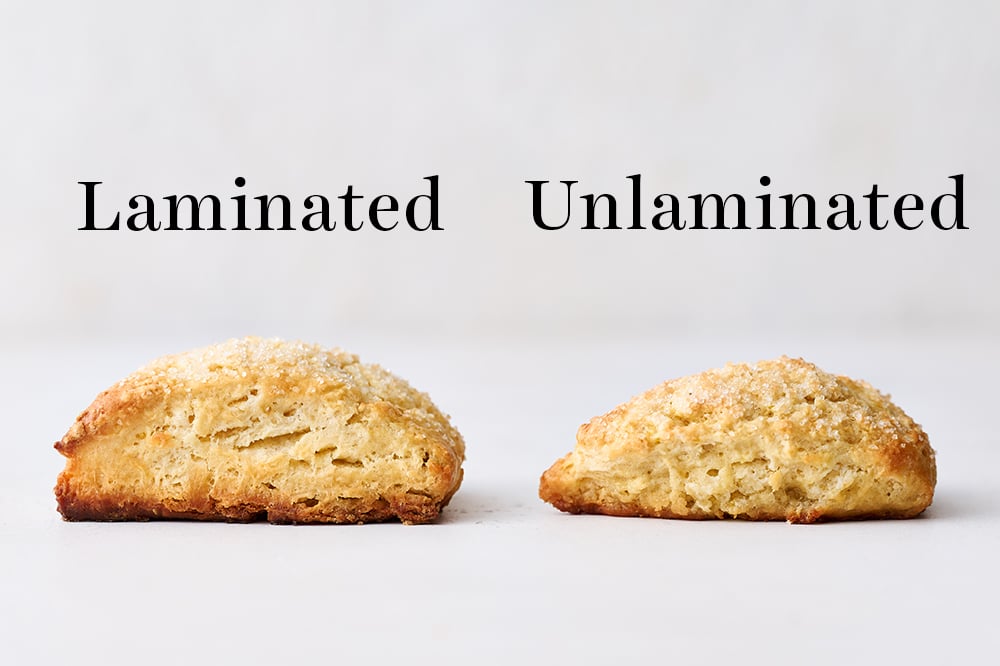
How to Laminate Your Scone Dough:
- If adding any mix-ins, fold into the dough now.
- Turn the craggly mass of dough out onto your work surface.
- Shape it into a rectangle.
- Fold the rectangle horizontally in thirds, like you’re folding a piece of paper to go into an envelope.
- Flatten it out into a rectangle again.
- Now fold it in thirds once more, but going the opposite direction. This will also help you to gently ‘knead’ the dough so it comes together into a more cohesive disk without overmixing it. Overmixing leads to rubbery and tough scones and biscuits.
Try to shape half your dough using this trick and half without to compare the difference. You’ll be surprised!
I actually demonstrated this during a live Zoom class with my Blueberry Scone recipe. Take a look at Benjamin’s laminated vs. un-laminated scones:

How to Make Scones Ahead of Time
The shaped unbaked scones can be covered with plastic wrap and refrigerated overnight. Bake from the fridge as the recipe directs.
How to Freeze Scones
Place shaped, unbaked scones inside an airtight container and freeze for up to 1 month. If baking from frozen, add about 2 minutes to the baking time.
Scone Flavor Variations
Feel free to get creative with your flavorings! Listed below are some ideas with specific ingredient additions, but you can fold in about 3/4 cup of dried fruit, chocolate chips, nuts, etc. If you want to make a fruit scone, dried fruit or frozen berries work best.
- Cranberry Orange Scones
- Pumpkin Scones
- Blueberry Scones
- Chocolate Chip Scones – like a scone and chocolate chip cookie had a baby!
- Lemon Poppy Seed: Add 3 tablespoons poppy seeds + 2 tablespoons grated lemon zest to the dough.
- Cinnamon Sugar: Mix 3 tablespoons granulated sugar with 1/2 teaspoon ground cinnamon and sprinkle on the after the egg wash.
How to Make A Glaze for Scones
- 1 1/2 cups (188 grams) powdered sugar
- 2 tablespoons water, milk, or citrus juice
- 2 tablespoons unsalted butter, melted
- 2 teaspoons vanilla extract, or other extract
- Citrus zest, to taste, if desired
- Directions: Whisk all glaze ingredients together until thick but still pourable glaze forms. Spread or drizzle over cooled scones and let stand until glaze has set.
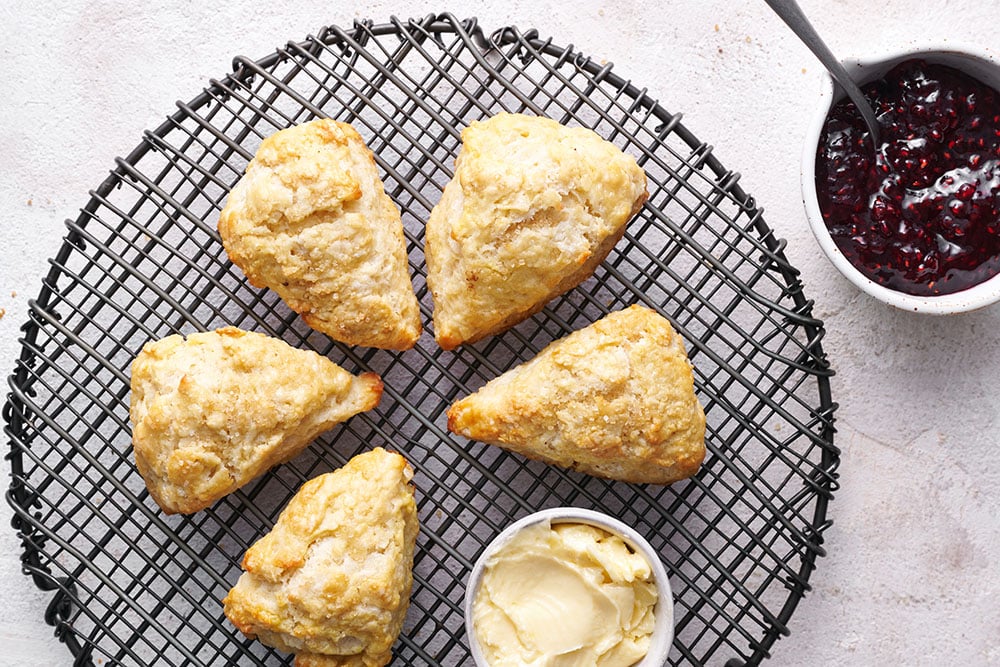
More Brunch Recipes You’ll Love:
- Savory Scones (made with shallots, jalapenos, and cheese!)
- Ultimate Muffin Recipe (customizable!)
- Quiche Lorraine
- Chocolate Chip Coffee Cake
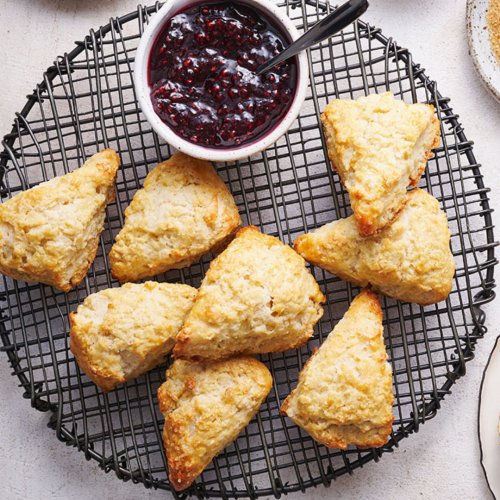
Classic Scones
Email This Recipe
Enter your email, and we’ll send it to your inbox.
Ingredients
- 3 cups (381 grams) all-purpose flour, measured correctly
- 1/3 cup (66 grams) granulated sugar
- 1 teaspoon fine sea salt
- 1 tablespoon baking powder
- 1/2 teaspoon baking soda
- 1 1/2 sticks (170 grams) unsalted butter, cold and cubed
- 1 cup (237 grams) buttermilk
- 2 large eggs, divided
- 1 teaspoon vanilla extract
- Coarse sugar, for topping
Instructions
- Adjust the oven rack to the center position and preheat to 400°F. Line two baking pans with parchment paper.
- In a large bowl, combine the flour, sugar, salt, baking powder and baking soda.
- Add the butter and cut with a pastry cutter or a fork until the butter is the size of large peas.
- In a separate bowl, whisk together the buttermilk, 1 egg, and vanilla extract.
- Make a well in the middle and add the liquid mixture. Mix until just combined. Don't over mix. If adding in dried fruit, nuts, chocolate, or other flavorings, do so now.
- Transfer the dough to a floured surface. *Optional Step: See Recipe Notes for lamination instructions.
- Divide into 2 equal parts. Lightly knead each into 3/4-inch thick, 6-inch diameter rounds. Cut each round into 8 wedges and place on your prepared baking pans. Space them out about 2 inches apart.
- Make Ahead: At this point, the unbaked scones can be covered and refrigerated overnight, or placed inside an airtight container and frozen for up to 1 month. If baking from frozen, add about 2 minutes to the baking time.
- In a small bowl, combine the remaining egg with 1 teaspoon water. Brush over the scones. Sprinkle with the coarse sugar.
- Bake for 12 to 15 minutes or until lightly browned. The scones are best served warm, or within a few hours of baking.
Recipe Notes
- Turn the craggly mass of scone dough out onto your work surface.
- Shape it into a rectangle.
- Fold the rectangle horizontally in thirds, like you’re folding a piece of paper to go into an envelope.
- Flatten it out into a rectangle again.
- Fold it in thirds once more, but going in the opposite direction.
- This will also help you to gently ‘knead’ the dough so it comes together into a more cohesive disk without overmixing it. Continue with step 7 above.
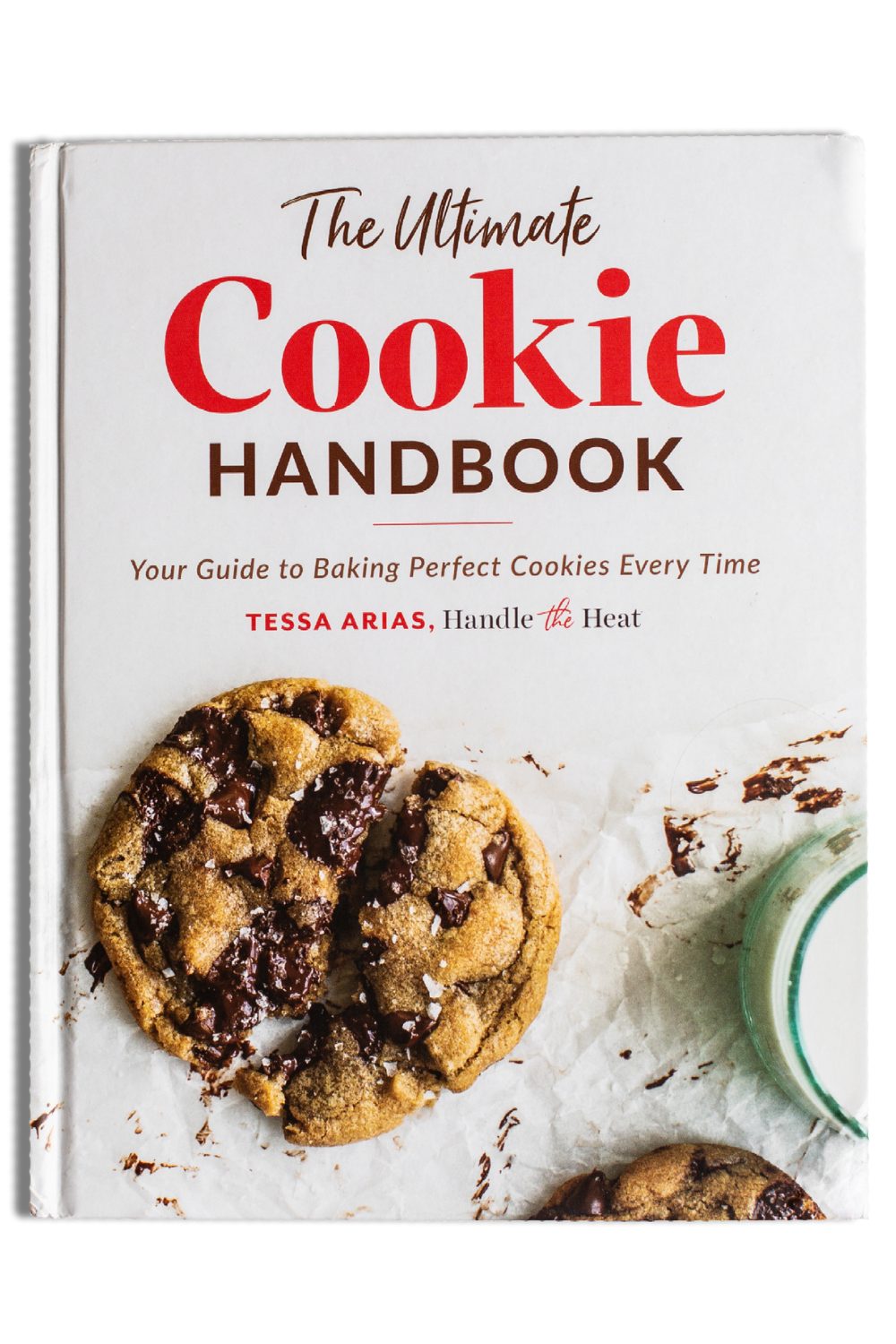
The Ultimate Cookie Handbook
Learn the sweet SCIENCE of cookie baking in a fun, visual way to customize your own recipes frustration-free. Plus, my best 50+ homemade cookies!
This recipe was originally published in May 2017 and updated in 2023 with new photos and even more baking tips. Photos by Joanie Simon.










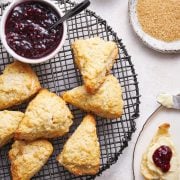
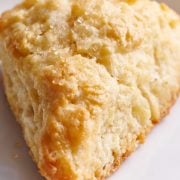

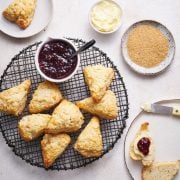


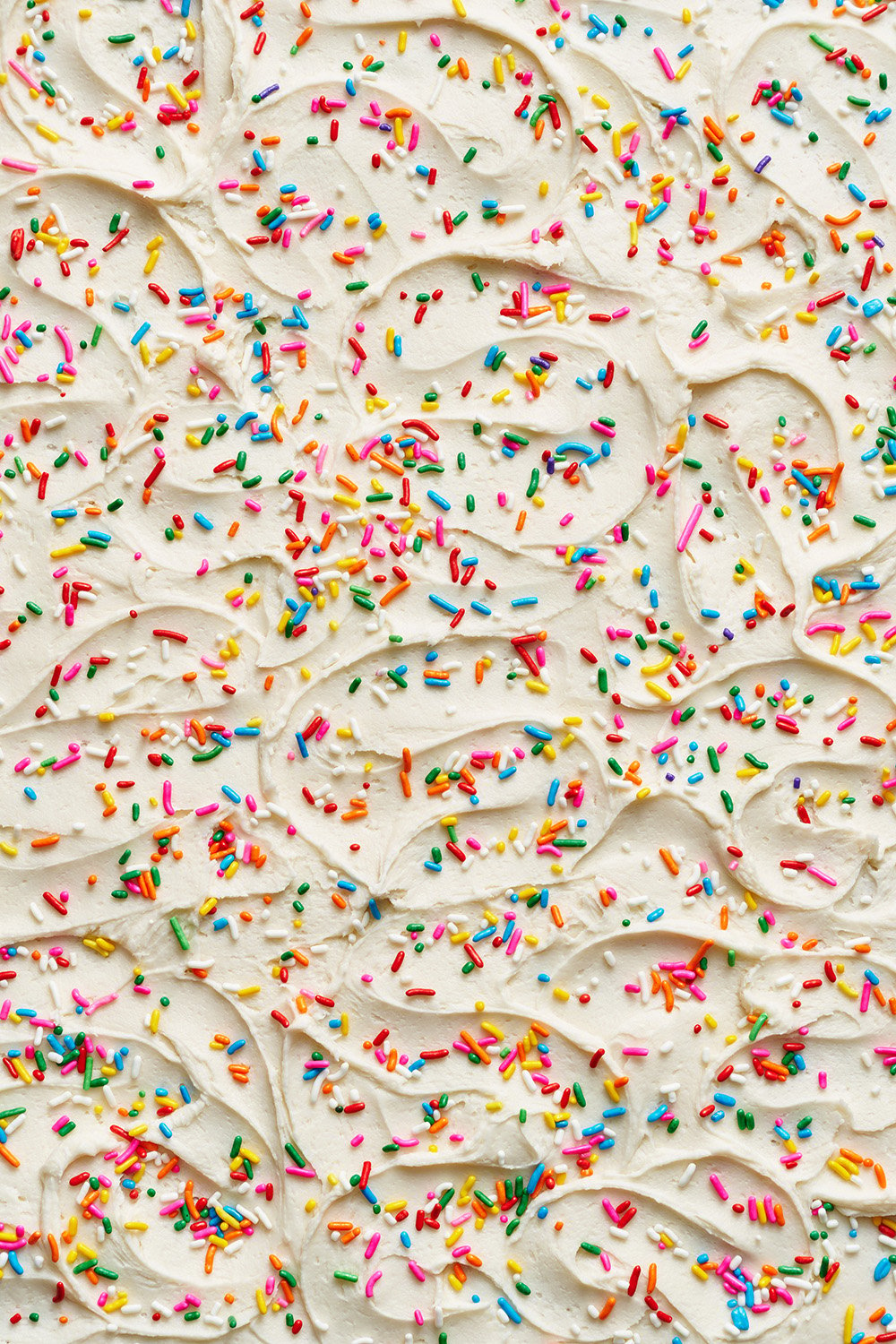



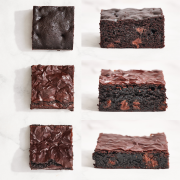
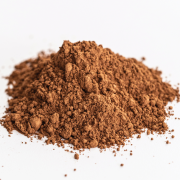
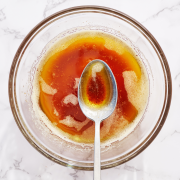

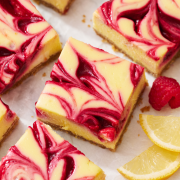

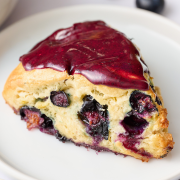








This recipe is the only recipe I use to make scones, they always come out fantastic.
Can you provide the nutrition information please. Thank you
I’m so happy to hear you love them, Berenice! We don’t share nutritional information for our recipes; however, there are numerous nutritional calculators online to assist with this if you wish 🙂
Made Blueberry scones – so delicious! Best scones I’ve made so far! The lamination takes it over the top! May not be the prettiest but taste the best!
These are the most flavorful, fluffy, moist scones I’ve ever made. The lamination step in the dough was worth it. I added some chopped candied ginger and a little bit of powdered ginger and they are the perfect weekend brunch with a cup of coffee.
Yum, what a fun flavor addition! So glad you enjoyed the recipe.
I have made this recipe before and it always turns out perfect. This time I made triple cinnamon scones. I had a cinnamon chips, a cinnamon filling, and a cinnamon glaze. They were out of this world and they disappeared quickly. Will definitely make again. Tessa, you have given us a blank canvas to draw any thing our minds can come up with in making the perfect scone.
Thanks Tessa I enjoyed this month’s challenge
That sounds yummy! For the filling do you just mix it in with the dough or do you spread it on the dough and then fold the dough to cover the filling?
These scones are super yummy! I loved the instructions on how to laminate the dough. Unfortunately I think my scones were too thick so when the layers expanded they fell over.
I’m so glad, Savannah! As for the layers falling over, try slicing off and discarding the rounded edge from folding over during lamination. That’s often the part that will fall over when baking. Hope that’s helpful!
That makes sense!! Thanks!
Super quick & easy scone recipe! I made mine plain, but now that I’m confident I can do it, I might try the choc chip ones 🙂
Absolutely delicious! Perfect size for a party and the recipe was so easy to follow! I love the option to customize! Made regular and chocolate chip for my family and they loved it!
These scones are so delicious!! They have quickly become a favorite among my family, friends, and coworkers and they always ask when I’m going to make them again.
This is a pretty quick and easy recipe. I made a savory and sweet version. Both were hits for brunch. I will be sure making this again. I got to use up the buttermilk right? (wink)
When I made the scone dough it was very wet, I followed the recipe and put 3 cups of flour in there. Should I add a little more flour to firm it up a bit or is the dough suppose to be wet?
It will be a little wet, adding more flour may result in dry, dense, or rubbery scones so be careful! With that said, if it is a particularly warm or humid day you may need some extra flour. Also, unbleached flour won’t absorb moisture as well as bleached flour. I use Gold Medal Bleached All-Purpose flour to test the majority of the recipes here. Hope that helps!
Ok, thank you very much for answering my question, I have bleached all purpose flour so hopefully it won’t be too wet next time, but if I need to add a little more flour I will just so it’s not a completely wet and loose glob of dough😅 Thank you again for answering my question, for the scone recipe and for the chance to enter the giveaway contest, Happy Easter! 🐰
Mine came out more cake like than I would have expected. Divided the dough and made a variety: plain, choc chip, blueberry, cinnamon sugar. The laminating definitely helps with rise. The plain really complements an egg with meat breakfast well as it tastes similar to a biscuit. Great buttermilk flavor!
Hi…They’re baking now. Have been in for 15 mins but the butter is all metling out. is that ok?
The butter should not be melting out, it sounds like your butter was too warm before it hit the oven! You want to begin the recipe with cold butter, and that butter should still be cold when it enters the oven. If at any point you notice your dough getting warm during the process of mixing, or if you live in a hot climate, place the dough in the fridge for 5-10 minutes, then continue on with the recipe. I’d recommend checking out Tessa’s tips above the recipe for more details. Please let me know if I can help further, and I hope you give these another try! 🙂